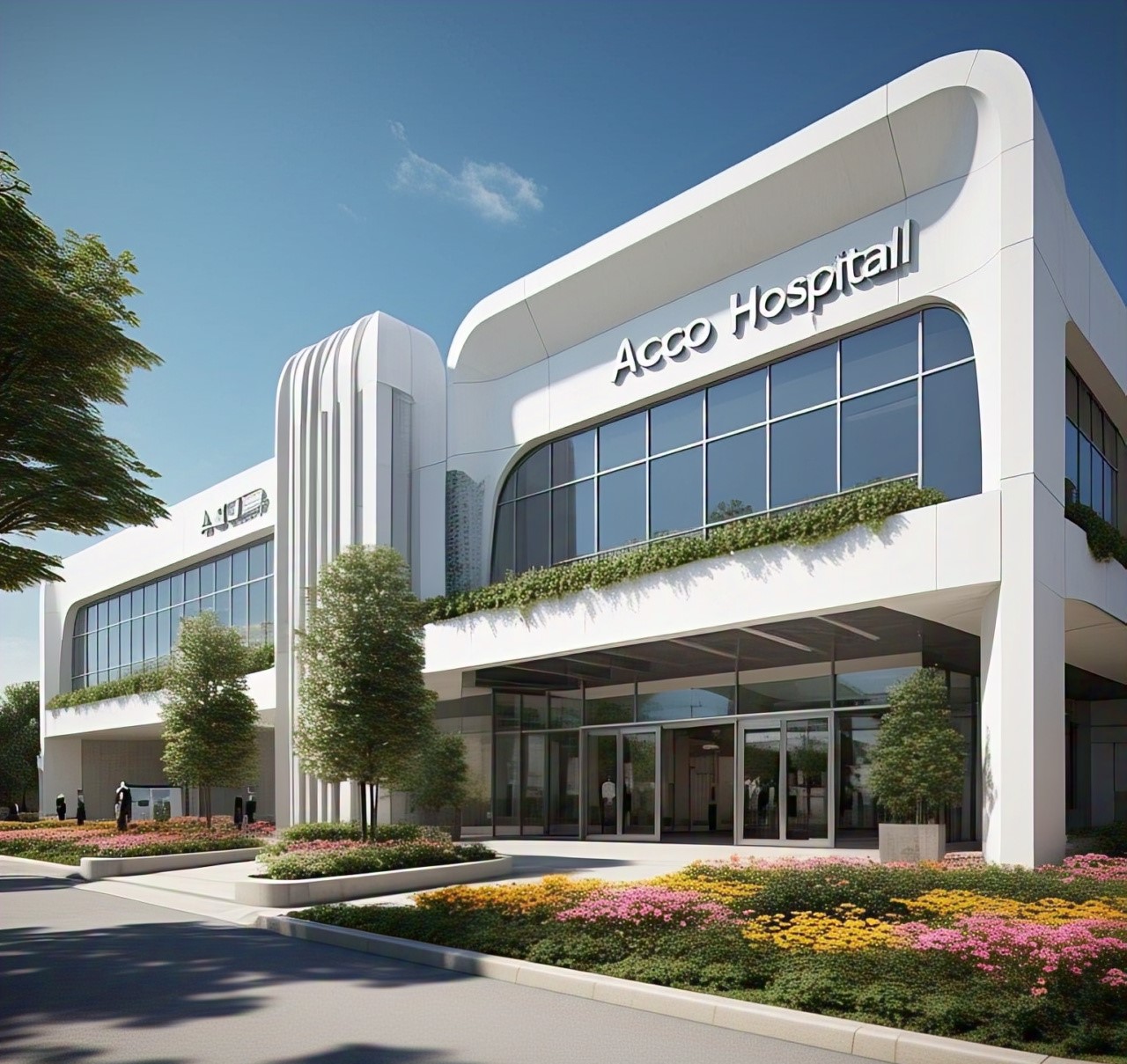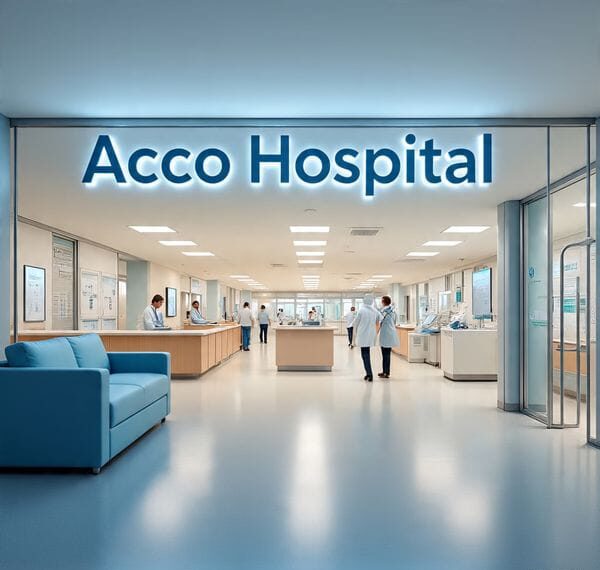
TRAUMA CENTRE BUILDING ARCHITECTURE DESIGN MOCKUP SERVICES ANYWHERE IN THE WORLD
Designing a trauma center involves creating a specialized medical facility equipped to handle emergency situations, critical injuries, and urgent medical care. The design should focus on efficiency, rapid response, patient safety, and the integration of advanced medical technology. Here’s a comprehensive guide to the design and planning process for a trauma center:
1. Needs Assessment
- Healthcare Needs: Evaluate the trauma care requirements of the target population, including types and frequency of injuries.
- Stakeholder Consultation: Engage with emergency medical services, healthcare providers, and community leaders to gather input on needs and expectations.
2. Site Selection and Planning
- Location: Choose a site that is easily accessible, close to major transportation routes, and has sufficient space for future expansion.
- Environmental Impact: Conduct an environmental assessment to ensure sustainable development and minimal disruption.
3. Architectural Design
- Space Planning:
- Emergency Department: Triage area, resuscitation rooms, treatment rooms, and fast-track areas for minor injuries.
- Imaging and Diagnostic Centers: X-ray, MRI, CT scan, ultrasound, and other diagnostic facilities.
- Operating Theaters: Equipped for emergency surgeries with adjacent pre-op and post-op areas.
- Intensive Care Units: Specialized ICUs for trauma patients with advanced monitoring and life support systems.
- Patient Care Areas: Short-stay observation units and inpatient wards for trauma patients.
- Support Services: Pharmacy, laboratories, radiology, physiotherapy, and other ancillary services.
- Administrative Areas: Office space for administration, billing, medical records, and other support functions.
- Public Areas: Main lobby, waiting areas, cafeterias, and visitor lounges.
- Staff Facilities: Staff lounges, changing rooms, on-call rooms, and training rooms.
- Helipad: For air ambulance services if the facility serves a large region.
4. Compliance and Standards
- Regulatory Requirements: Ensure the design complies with local, national, and international health and safety standards.
- Accreditation Standards: Design to meet standards of accreditation bodies like the Joint Commission (USA), NHS (UK), NABH (India), or other relevant organizations.
- Accessibility: Ensure accessibility for people with disabilities, including ramps, wide corridors, and accessible restrooms.
5. Sustainable Design
- Energy Efficiency: Use sustainable building materials, energy-efficient lighting and HVAC systems, and renewable energy sources like solar or wind power.
- Water Management: Implement water-saving fixtures and systems for water recycling and rainwater harvesting.
- Waste Management: Develop systems for managing medical and general waste, including recycling and hazardous waste disposal.
- Green Spaces: Integrate green spaces within and around the trauma center to improve air quality and provide a calming environment.
6. Interior Design and Equipment
- Patient-Centric Design: Create a functional, healing environment with easy navigation, natural light, and calming décor.
- Medical Equipment: Ensure state-of-the-art medical equipment in all clinical areas, with adequate storage and maintenance facilities.
- Aesthetic Considerations: Use calming colors, natural light, and artwork to create a healing environment.
- Technology Integration: Plan for advanced IT infrastructure, including electronic health records (EHR), telemedicine capabilities, and digital signage.
7. Safety and Security
- Fire Safety: Install fire alarms, sprinklers, and emergency exits according to local codes.
- Security Systems: Implement surveillance cameras, secure access control systems, and protocols to ensure the safety of patients, staff, and visitors.
8. Information Technology
- Health Information Systems: Integrate advanced EHR systems for efficient management of patient records.
- Networking: Ensure robust IT infrastructure for connectivity, telemedicine, and other digital health services.
- Data Security: Implement strong data security measures to protect patient information.
9. Construction and Project Management
- Project Planning: Develop a detailed project plan with timelines, milestones, and responsibilities.
- Budget Management: Establish a realistic budget and monitor expenses closely to ensure the project stays on track financially.
- Contractors and Subcontractors: Hire experienced contractors and subcontractors with expertise in healthcare facility construction.
- Quality Control: Implement quality control measures to ensure high standards throughout the construction process.
10. Post-Construction
- Staff Training: Provide comprehensive training for all staff on new facilities and equipment.
- Commissioning: Test all systems and equipment thoroughly before opening to ensure they are functioning correctly.
- Maintenance Plan: Develop a regular maintenance schedule to keep the facility and equipment in optimal condition.
- Community Engagement: Launch outreach programs to inform the community about the new trauma center and the services it offers.
Example Layout for a Trauma Center
Ground Floor
- Entrance Lobby: Main reception, information desk, and visitor seating.
- Emergency Department:
- Triage Area: Initial assessment and sorting of patients based on severity.
- Resuscitation Rooms: Equipped for life-saving procedures.
- Treatment Rooms: For non-critical care and minor injuries.
- Fast-Track Area: For minor injuries and quick treatments.
- Imaging and Diagnostic Centers: X-ray, MRI, CT scan, and ultrasound facilities.
- Public Areas: Cafeteria, gift shop, and public restrooms.
Upper Floors
- Operating Theaters: Equipped for emergency surgeries with adjacent pre-op and post-op areas.
- Intensive Care Units: Specialized ICUs for trauma patients with advanced monitoring and life support systems.
- Patient Care Areas: Short-stay observation units and inpatient wards for trauma patients.
- Administrative Offices: Offices for hospital administration, billing, medical records, and HR.
Lower Floors/Basement
- Support Services: Laundry, kitchen, central sterile services, maintenance, and storage areas.
- Parking: Adequate parking for staff, patients, and visitors.
- Helipad: For air ambulance services if the facility serves a large region.
Outdoor Areas
- Gardens and Courtyards: Therapeutic gardens, walking paths, and seating areas.
- Emergency Access: Dedicated areas for ambulance access and emergency vehicles.
Cultural Considerations
- India: Incorporate local architectural styles and cultural elements, ensuring facilities accommodate large family visits and traditional healing practices.
- UK: Follow NHS guidelines, incorporating designs that reflect local architecture and climate, with a focus on patient-centered care.
- USA: Adhere to guidelines from the American Hospital Association (AHA) and other relevant bodies, focusing on advanced technology integration and patient comfort.
Would you like more detailed information on a specific aspect of the trauma center design, or need assistance with a particular project?
4o
Comments
0 Likes




